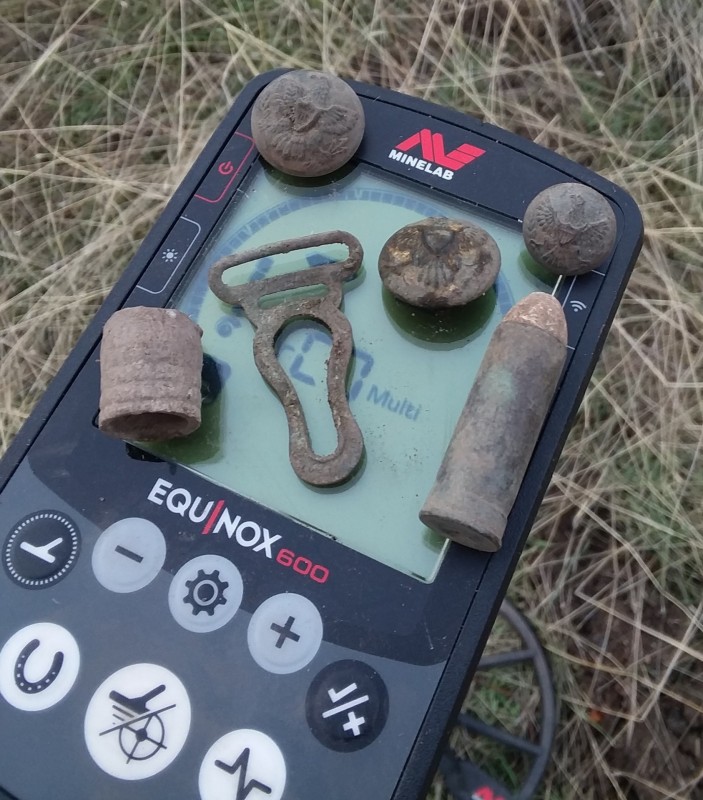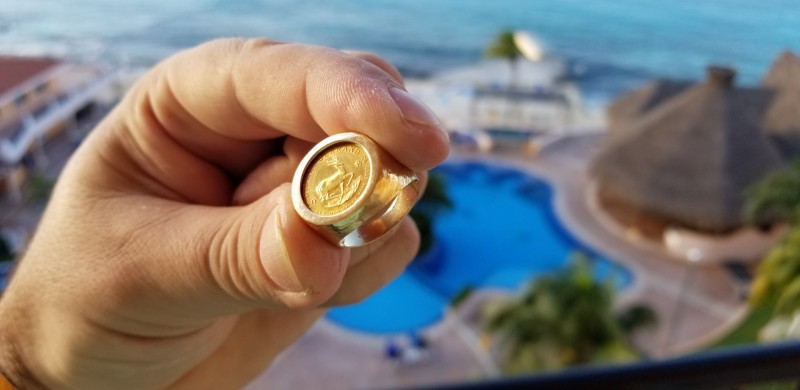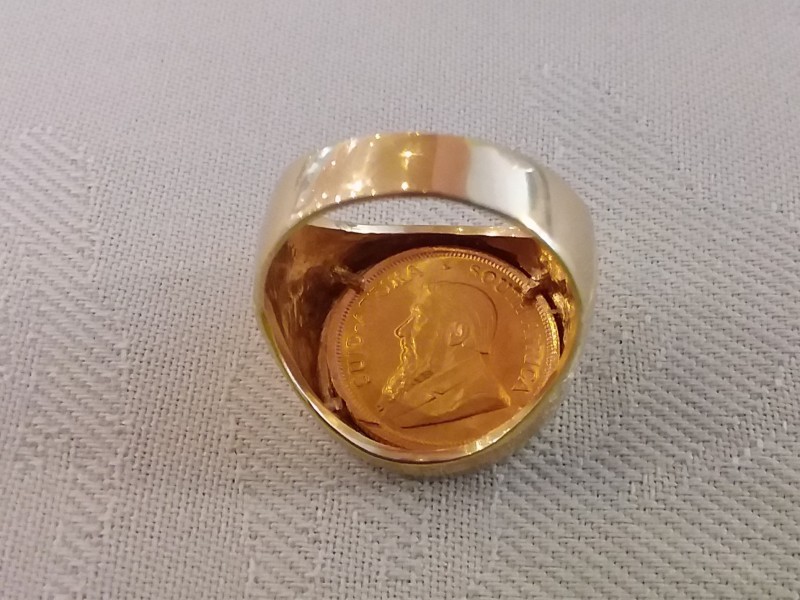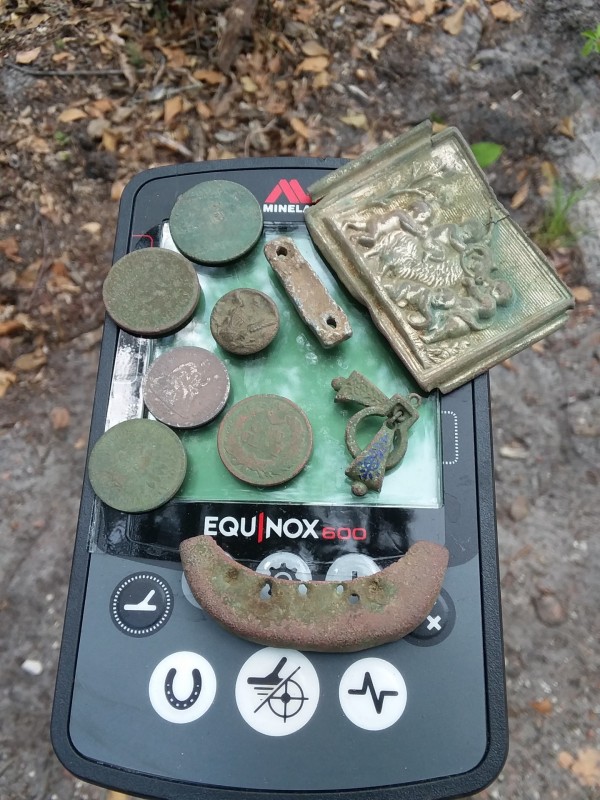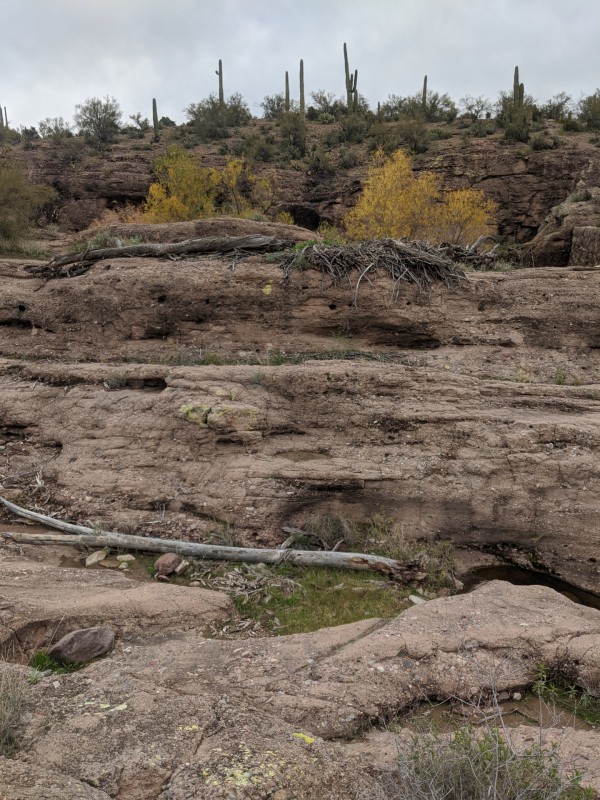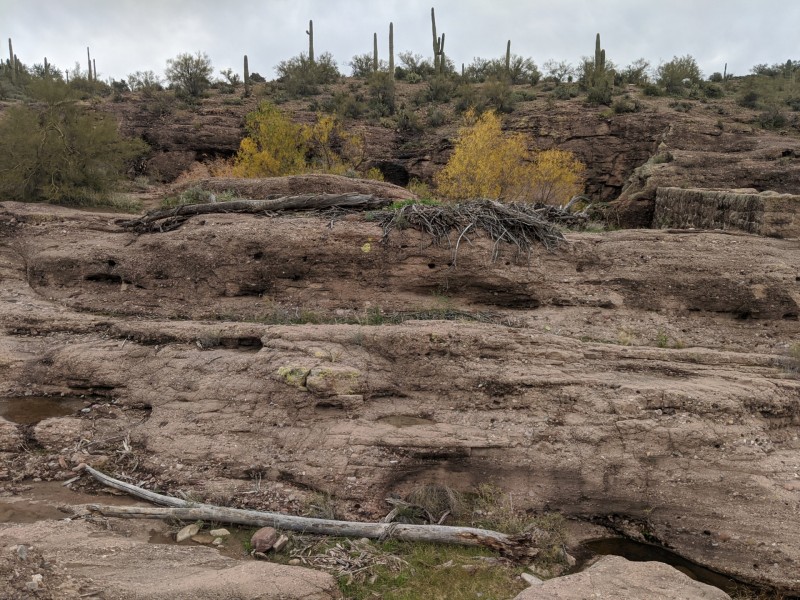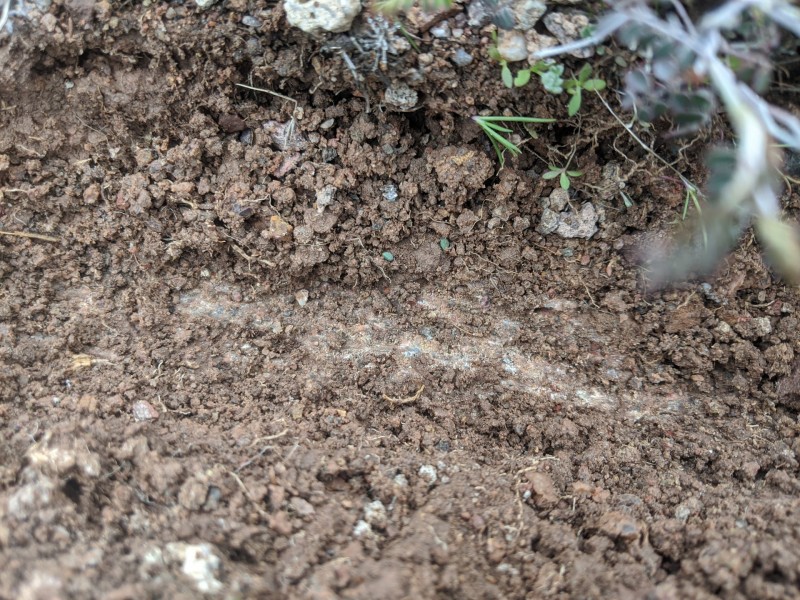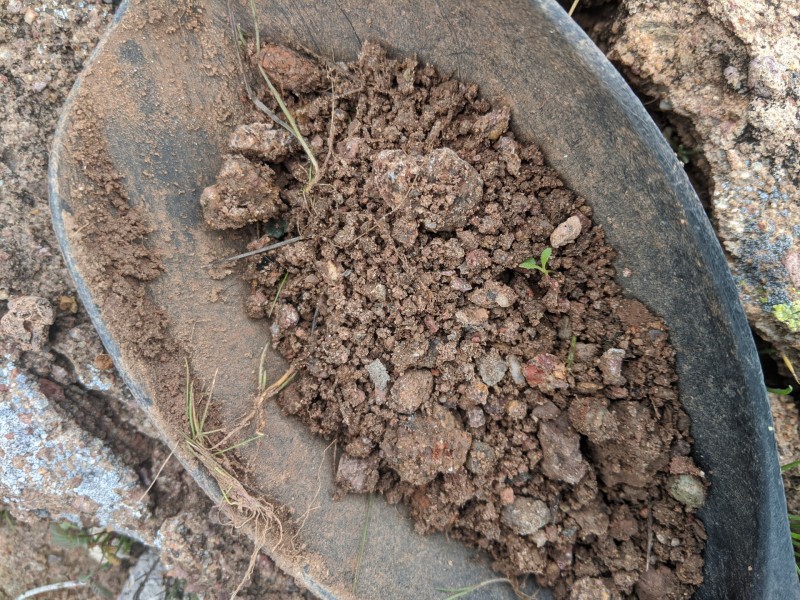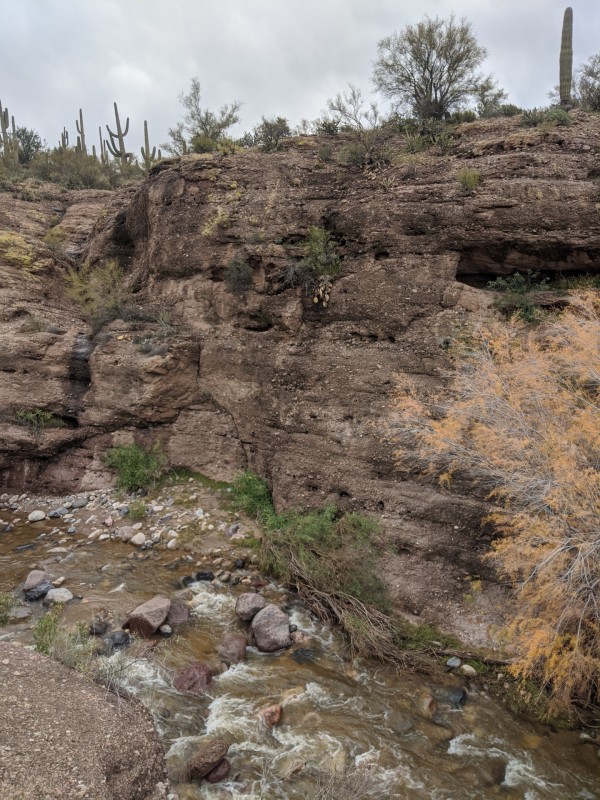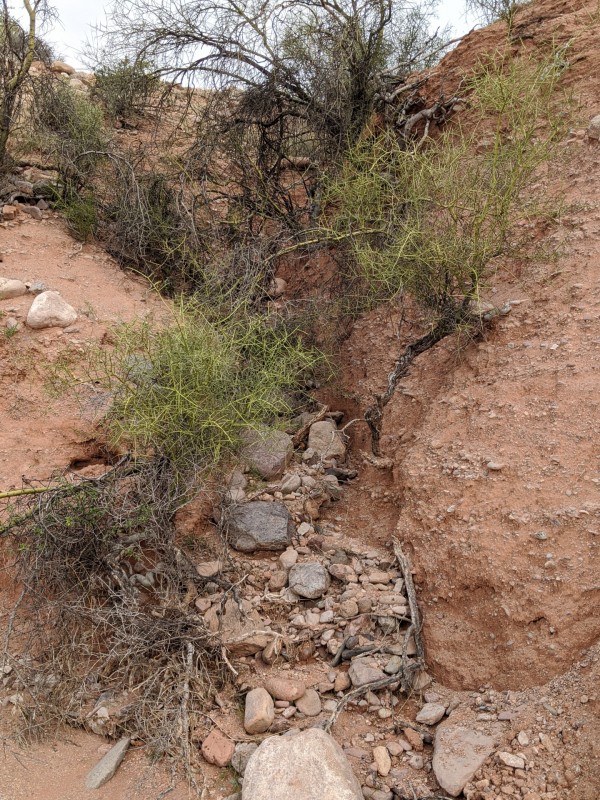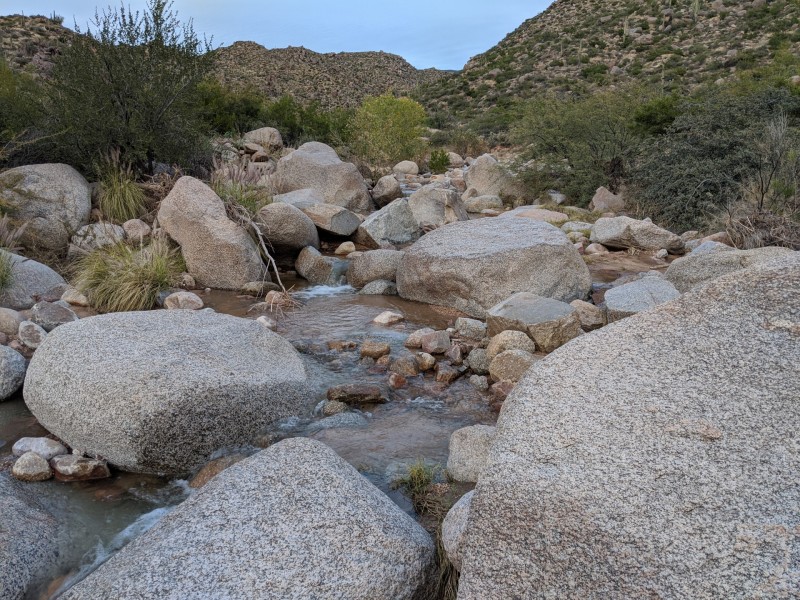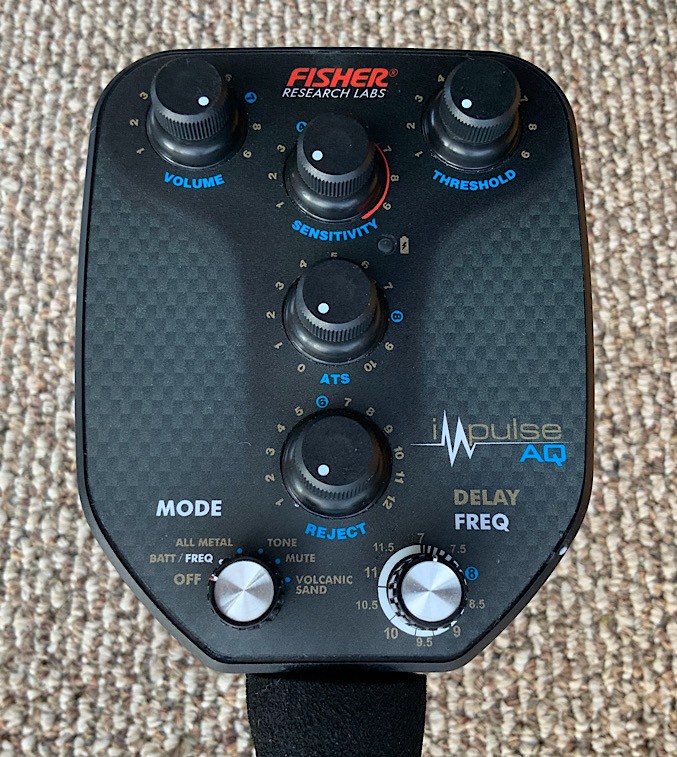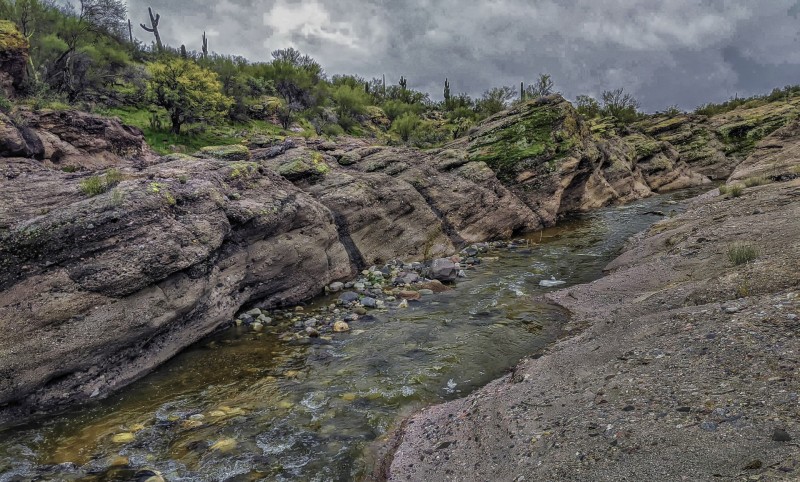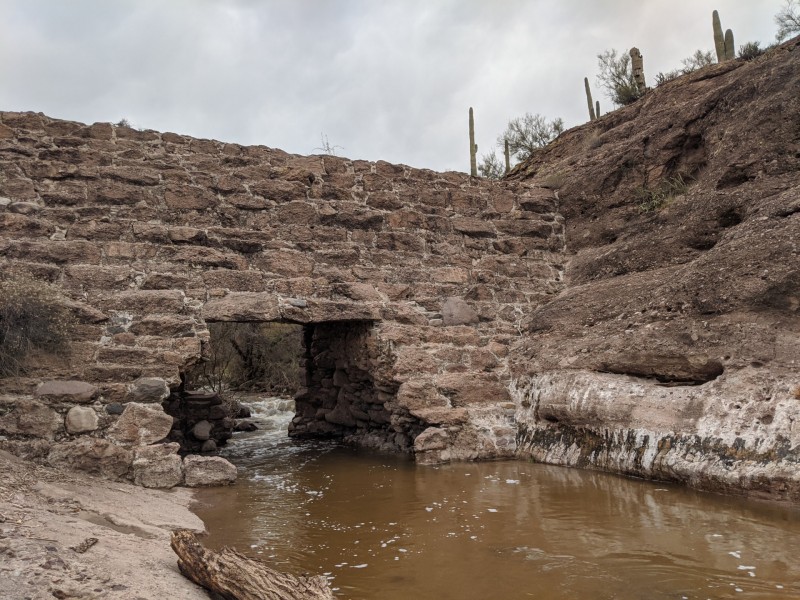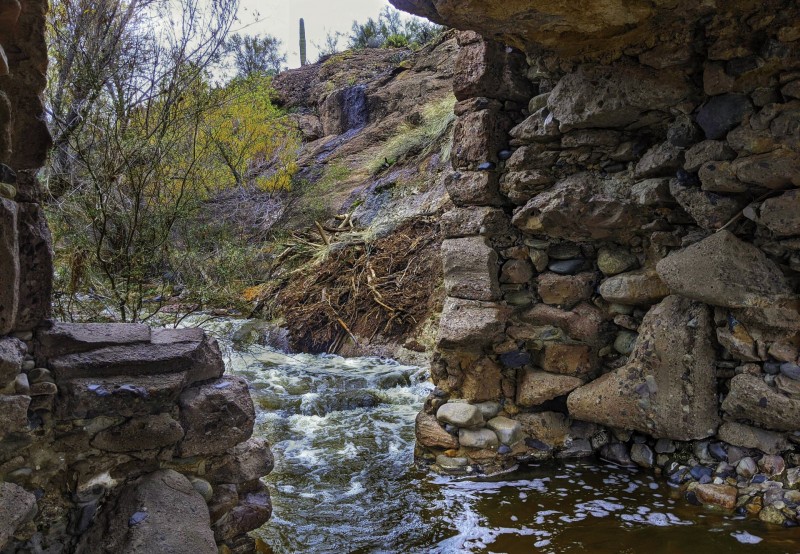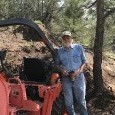Leaderboard
Popular Content
Showing content with the highest reputation on 01/07/2020 in all areas
-
7 points
-
I use an aftermarket discriminator when prospecting with my GPZ 7000. It is 100% accurate at identifying iron, doesn’t require batteries, and it will even remove the iron from my digs for me...it's a neodymium super magnet!6 points
-
4 points
-
I use my Nox 600 most of the time for coin and jewelry hunting in the super trashy parks in the Denver area. It takes a real beating in all kinds of weather and I must have put 1500 or more hours on it already. The Nox 600 needs more Love😘 in my opinion. It can definitely get the coin, jewelry and even relic job done in really bad soil conditions. I was mostly looking for deep silver today in some of the most trashy areas of the park so I was bouncing back between default Park 2 and a trashy park notched Park 1 depending on the tiny aluminum fragment chatter. Luckily I was in basic Park 2 when I got the coil over this target since it came up as a steady, beautiful, round, medium toned 18 at 7" (3 depth arrows), which I had notched out in Park 1. I had three targets under my 11" coil. Initially I thought it might be a coin spill. I had already dug a 6" 22,23 screw cap and a 3" 13,14 pull tab and moved over to the last target close by which sounded even more beautiful. I was expecting either a giant pull tab, beaver tail, a thick chunk of aluminum, brass shell casing or a large caliber modern bullet. I was super stoked to see that gold. Way to separate targets Nox 600!!!!!!!!!!! And, way to go me for being willing, able (I work out a lot!!!!) and happy to dig what some people think is trash. If I hit a target with tight numbers or even better, just one number with solid tone in the 6 to 23 range I patiently dig it. I get cut, scraped knuckles and frustrated occasionally but if it sounds good I dig it............ I have yet to dig a good quality jewelry target at 10" deep or less with the Nox 600 that didn't sound fantastic. Deeper than 10" anything can happen....... Jeff4 points
-
I collect all lead detected. I recently sold a bucketful to a guy who does lead lighting.3 points
-
If they can make the magnet strong enough to suck the iron out of the ground without digging I think everyone will be sold on that solution!3 points
-
Yes, wish the Audio was better but it does give a good idea on Pin pointing deep targets with the "AQ" . Won't be long all of us will be testing...And Video's. 2020 is going to be interesting..2 points
-
WOOW,finally saw a video of AQ in action!! awsome depth on targets.I guess it must be LE.JAG because he has the same sand scoop.I can't see any control unit or?Thanks for sharing!!!2 points
-
Last night after work i took my Nox with the 11 inch coil this time for another search of the beaches i went to 2 days ago. I took the Bus to the beaches further along beyond where i finished the other day . I started at around 10 pm and found a few coins but soon found that area was too built up for any successful hunt so i went to where i finished last time and worked back to where i started last time . Again i saw that there were new holes about , and again i started to find coins near and around where these holes were . It was a lot harder this time and the beaches are building up due to the longer tides and the sea hitting the beach straight on . I didn't stay out as long as i thought i would and finished at 12.45 am . I counted up and went home . My total for this search was £20.53p and a unidentified Pre Decimal Penny and a George VI Farthing . My next hunt will be either Saturday night or next week sometime . Someone on my last hunt post wanted my settings , i will put them on here when i have had some sleep .2 points
-
Update the paint stripper did nothing other than make the clad smell like a bag of oranges. I also gave Trisodium Phosphate (TSP) used for cleaning walls etc prior to painting and it didn't do much at all. So far the ammonia water and dish detergent does the best. Has a pretty low odor and think I'll make a batch of it for my ultrasonic cleaner. Naval Jelly might be good on heavily corroded coins.2 points
-
Here are a few pictures of the area we hunt. The area is large in size and the different types of wire and leaf gold specimens are found on specific tailing piles and hydraulic areas. The area is at 11,000+ft. in altitude and the terrain is extremely steep in most areas. The following picture is my wife (lower left) and one our friends detecting tailing piles. We use a cultivator type rake with a strong magnet for our digger tool. The area has moderate mineralization with some areas that have abundance of hot rocks. A Vlf type of detector is used mostly because of the number of ferrous targets that are encountered. We also find pieces of blasting caps, sometimes ones that had not exploded and bird shot from people target practicing. This a picture of a nugget that was found on a tailing pile and you can see some of the gold peeking through. This next picture is an area that was hydraulic and I found a 22.3 gram nugget. This is another area that was hydraulic and where I found my very first nugget metal detecting. The nugget didn't have the wow factor as others we have found, but it was a special moment for me finding that first elusive nugget. More to come..........2 points
-
indeed, it will be the same with AQ the ground effect / due to seawater / is too strong to see a link the detectors, does not see the chain / only one link at a time or more often the clasp which is larger, or plated the Bipolar by removing the ground effect will be // probably // better, but it will bring other problem if we go down to 5us that we remove the ground effect Ok, let's see the very fine gold chain but also the millions of aluminum particles that are in the sand ............ something going crazy it is better to dig deeper to go get big gold rings more profitable and quieter for the ears 🙂2 points
-
I saw last years investor presentation and it was saying the 7000 was only midway through its expected production lifespan. True or not I don’t know. I agree it’s an arms race to find gold these days. I just hope my 7000 ‘investment’ will last a few more years. New coils are a lot cheaper that new detectors!1 point
-
Hi everyone, I'm new to metal detecting and I just ordered a Whites 24k. My question is does the IP54 rating mean I can detect in the rain without worry? I've seen the technical definition but wanted to know what that means in practice using the detector in the field? Thanks for this forum, I have learned a heck of a lot. I found a little gold in an old hydraulic pit with hand tools and I'm hoping the 24k will help me cherry pick and save my back!1 point
-
I wouldn't be surprised if you get fast service. Nokta/Makro seem really aggressive to keep customers happy.1 point
-
Hi, I haven't seen your sister in a while but we do get to hunt together sometimes. She can find the gold jewelry too!!!!! I keep my Nox 800 charged up and ready to go for special occasions like gold prospecting and relic hunting. My Nox 600 does all of the daily grunt work but it sure does find jewelry!!!!!! In the Denver area along with my awesome metal detecting, goose poop eating dog, I use an 8" long flat head screwdriver that I keep very sharp, a homemade 10" ice pick type probe (with a golfball handgrip) and a Teknetics Tek Point pinpointer set to maximum sensitivity which usually gets down about 3.5" here. If possible I do coin popping by cutting a 4" long slit in the grass/turf. I pry it apart and excavate from there unless the target is shallow in which case I don't even dig. I just pop it out with my probe. With the Nox, I use every tool available on it, especially the horseshoe button, the on board pinpointer for sizing and exactly locating targets and the depth meter. I have to be very precise and can't afford to just use the coil tip approximate pinpointing method when I'm digging with a screwdriver. Sometimes soil conditions are bad and the slit turns into a very small plug............. I do my absolute best to leave no trace however. I know most of the park workers and rangers at the 30 or so parks I go to and they often are very interested in what I find and have never given me any trouble since I pick up a lot more trash than I dig and they are well aware of that. I also help them find wayward sprinkler heads and stuff they have lost either at a park, at their maintenance facility or once even at one of their homes. thanks for the questions, Jeff1 point
-
Using a good magnet can really help in some discriminating. I have a bigger problem with lead than I do with iron.1 point
-
Gerry provides thorough training and his staff are experienced detectorists. He is an effective communicator and makes understanding your detectors settings much easier than trying to learn it on your own. The knowledge of your detector and confidence you will gain during the three day training will give you a real advantage going forward. I took the training in Rye Patch and went to Ganes Creek with Gerry and both were worth the money. Good luck!1 point
-
1 point
-
At a Q&A session with Minelab CEO Peter Charlesworth and Engineer Mark Lawrie at the Minelab Partner Conference 2 years ago, I asked if there would be an update for the GPZ 7000 that would include discrimination. Their response was that discrimination is not possible with the ZVT tech.😩1 point
-
I think its great to try different formulas for cleaning coins, relics, and EO,s (encrusted objects). I'm sure most of us are just trying to identify and preserve our finds! And are not concerned with grading, or creating museum pieces! That being said, those pieces are out there, and are found! And if there is any doubt! Do nothing but protect in a static environment, until they can be seen by someone more knowledgeable!👍👍1 point
-
Come on Steve, We don't need to obey the law's of physics; remember??? We have unicorns and fairy dust!!! 🦄🧚♀️1 point
-
Nice find, Jeff! I'm glad I went for the Eqx 800 vs. Eqx 600 for three reasons: 1) ability to customize tone breaks; 2) WM08 module included; 3) gold mode. I'm sure if I didn't know about the 800 and/or only had access to the 600 I'd still like the detector, though. And of course $250 difference has got be a factor. Since my sister lives in the Denver area and I've hunted there with her (and with your Eureka Club) I'm wondering about your recovery techniques. I know the Denver city parks have tight restrictions on size and shape of digging tools, and some of the surrounding suburbs are more restrictive, even a few going so far as banning metal detecting. What tools and techniques do you use?1 point
-
Thanks everyone! Gerry, I bought the detector from you and it's been damn good to me! I found its first gold the day I got it and pulled 4 gold rings, 2 gold charms and a bunch of old silver coins from a small beach in my home town. I'm heading to a beach here with 2 big hotels on it next Monday, Riu Guanacaste and Riu Palace. Negative tides and hopefully some jewelry to be had!1 point
-
Bleach, and ammonia! And acids, and alkali's! Etc.. can have very strong explosive reactions and/or make toxic gases! Be aware, and have some knowledge of, what your combining together!! It sorta is, rocket science! If your not sure, its safer to do experiments outdoors! And wear neoprene gloves and face protection!💥☠ 🥽🧤 That's my public service announcement for today! Take care all! 😊👍1 point
-
Talked to my uncle and he said for general gold and silver use 8:1 water and amonia with couple drops of dish liquid. I just tested it on some clad along with a soft bristle toothbrush and it worked good even on copper and worked very well on a patina IH penny without removing the patina. He said Phosphoric Acid may work well and that can be easily found in navel jelly rust remover. I thought I had some in my shop of horrors but can't find it. Lastly testing an citrus based paint stripper on some coins that I dug at the beach which are in rough shape. Don't worry just clad.1 point
-
It’s all pure speculation on my part but seeing how this is a thread about a non-existent GPZ8000, I have a hunch discrimination isn’t even possible on ZVT. But is discrimination depth at its pinnacle? No way, there is always room for improvement. I’m all for a hunch type discrimination allowing the user to have some input, it doesn’t have to be 100% accurate, I already have a well trained ear, just need a supplement or a probability meter to use as a tool when making decisions, something that would help with making an informed decision, call it the “Informed Hunch-Ferrometer”.🤣1 point
-
Personally, I favor the more information option you have exhibited, vs no info. That policy eliminates speculations and maintains your “golden” reputation. I’ll be buying ASAP when the dust has settled. Thank you for your trying to bring great product upgrades. What is appreciated is that you are sticking to your business ethics as you’ve always done. Keep us posted, and thanks. Dave1 point
-
That's definitely my vision for the future of detectors too. There are a lot of gains left to be had in detector tech by embracing a theory and software approach over an electronics-centric approach. Modern ARM chips have a ton of free cycles to use and a ton of signal processing capability built in. These chips are cheap now and detector companies including ML are over a decade behind the rest of the electronics industry in embracing them or unleashing their full potential. Lower your noise floor and you can boost sensitivity without needing to boost power. Reduction in EMI and ground noise (salt, mineralization) can raise the effective depth of a detector too, even if gains are kept the same. But with a lower noise floor, you can also boost your gains up too. Not to mention speed up the ability to prospect faster and more accurately. A look at ML's latest patents and I'm sure this is the direction they are heading - less analog electronics and more physics/algorithmic approaches. Discrim can be done through digital signal processing too I think, though I'm not absolutely sure of it. There is a lot of room left for detector development IMO. The greater problem is nugget depletion, and unfavorable placer geology for deeper nuggets as Steve mentioned due to things like surface deflation or just shallow bedrock. Not to mention in the US we have something like 50+ million people within maybe 1 to 4 hours drive from at least one of the major goldfields or placer districts so that makes finding new areas tougher every year too since it's not like one has to go on a 2-4 week long trek to explore for new areas if one already lives in the area and can head out every weekend or after work.1 point
-
1 point
-
Jeff, I too feel the EQ-600 does not get the love it deserves. Most folks don't realize it is just as deep as the big brother and for most parks, schools, urban and all beaches including in water hunts, it is the best priced and performing detector. Even hunting in old sites with average trash, it does just fine. Your lunker of a gold ring just goes to show you are doing it right. Hats off to you my friend. Attached photos are EQ-600 finds also.1 point
-
They'll probably just replace it wholesale rather than bother paying the labor to open it up and repair it. They do that with the Equinox and it costs 3 times the Simplex.1 point
-
My Field Staff Experts and I know the majority of gold detectors on the market. We offer 3 days Field Training at Rye Patch Nevada and many clients will stay in the area and hunt a few more days. As for guided tours, I quit that a few years ago. Yes most of us had fun and success, but for a few, they expected to load their pockets. If you are interested in real hands on training, let me know. Either way, I wish you luck.1 point
-
Le. Jag, Can you make a video of a real time beach hunt? One where you are detecting on a beach just like anyone else and film a real live gold ring dig? I know everyone loves to see piles of gold rings that you have already dug, but a real live dig on the beach would probably convince more detectorist that the Impulse AQ is much better than any other beach detector on the market as they would see it like they were detecting it themselves. Thanks, Joe1 point
-
More detailed photo closeups of things like the battery, battery connections, coil connector, etc. would then be a welcome alternative. People love good photos. Thanks Rick.1 point
-
I could send you a map of my little corner of the Sierra Nevada mountains with little red "Xs mark the spots" on it and guarantee that you will find some gold - - - - -and bears, and mountain lions and rattlesnakes and poison oak and mosquitoes and - well you get the point. But your the one that mentioned "adventure".1 point
-
1 point
-
1 point
-
OK, first the easy ones. Here’s a pic Fisher Impulse AQ controls Volume,Threshold and Sensitivity work pretty much like any other metal detector. Note however that this thing has the smoothest threshold I have ever encountered in a PI and that included a TDI with Reg’s mods (I have never used a GPX 5000 so cannot compare there)> ATS is Fisher terminology for SAT (self adjusting threshold) Lower settings provide more sensitivity to weak signals but require slower swings. Reject is a control which increases the effect of iron ID in the ID modes of Tone, Mute and Volcanic Sand (more on them later). As you increase this control progressively larger/higher conductivity targets - which have a longer time constant are either muted or give a low tone. The Mode control has the control choices that it is labeled with. The Battery position activates the led to the right of the sensitivity and ATS controls. This position also activates the Frequency shift function. With the Mode in Barr/Freq, the Delay/Freq control selects a range of frequencies. to minimize EMI, you would hold the rod horizontal so that the coil is facing the horizon. A sweep while trying the various positions of the Freq control knob will minimize EMI. More on the Delay/Freq control below! The All Metal mode is the deepest seeking mode with the smoothest threshold. All targets give the same high tone, LE.JAG hunts in this mode by preference and with the ATS set low, listens for faint wavers in the extremely smooth threshold. Although this is an all metal mode, ferrous and especially non-round ferrous targets are usually identifiable by swinging over them at the limits of detection for that target - this will usually cause them to give a double tone. The Tone mode causes (depending on the adjustment of the reject knob) progressively longer persisting signals (iron and high conductors) to give a low tone while shorter persisting low conductors give a high tone. Interestingly enough, the two tones have a range of pitches depending on the strength of the signal. I have to admit that my brief time with AQ prototypes never caused me to discover this for myself - but again, I have a tin ear. The Mute mode depends for its effect in the same manner as the tone mode. ID’d targets signals are completely or mostly muted. The Volcanic Sand mode is for really tough mineralization - the kind that makes a gold ring on the surface invisible to any VLF including multifreakers. It’s use combines with increased minimum pulse delay and increased ATS. The best thing about all the ID modes is that signals from “non excluded” targets still ring out full with their high tone signal - as if the iron, etc, just disappears Now back to the Delay/Freq knob. It has no stop, you can spin it endlessly. As previously described, when the Mode knob is in the Batt/Freq position it varies the frequency. As soon as you switch the mode knob to all metal, tone, mute or vacancies sand however, it controls the minimum pulse delay in microseconds. Some care is required here. If you adjust the frequency with the mode knob in the batt/freq position, then move the mode knob to any of the operating modes, the minimum pulse delay will be whatever delay is shown on the Delay dial. If, for example you had EMI bothering your threshold and did the freq adjust as described above - and say, you ended up in the “11” position with the knob - when you switch the Mode knob back to an operating mode, your pulse delay would be 11 microseconds - probably not what you want. About pulse delay. The Delay knob controls the time delay between the abrupt cut-off of the powerful current in the coil and the taking of the first sample of the return signals as the exponential decay of the return signal is occurring. Short pulse delays mean sampling higher up on the decay curve. The minimum pulse delay gives the greatest signal strength. This does at least two things. Targets which give weak returns due to their size, shape or conductivity are more detectable because their signal is still relatively strong because the sample is taken quicker after pulse cut-off. Also, however, ALL signals are stronger, so, for example, a 2 gram ladies ring might be detectable at 14 inches with a 7 microsecond pulse delay, it might only be detectable at a shallower depth - say, for example 10 inches with a pulse delay of 10 microseconds. This increase in depth on all targets is often not appreciated when short minimum pulse delays are discussed. It is not always possible due to conditions to use the shortest pulse delay - rapidly changing mineralization, highly ferrous and even magnetic black sand, etc may require use of longer pulse delays for smooth operation. I’ll leave at that for now. Edit/Addition - Note on coil connector false signals1 point
-
It's north of Lake Pleasant, look up The old China Dam Arizona on Google, the Dam is in no map ...... It was built by Chinese prospectors in 1860 ...... The Rich Gulch is about a quarter mile south from The China Dam...... But If you zoom in into the picture I posted from Google Earth The China Dam is North of the Gulch.... You can see it ...... Gold and Relics everywhere found a 1909 China Hupeh One Dollar Silver Coin..... I sold it on ebay within 10 minutes of posting for $300.00..... Then I later found out it was worth over $850.00....... 😞1 point
-
My bet it’s gold. I haven’t found a stainless steel ring that has been repaired.1 point
-
That is a similar response that I had and reported about new coils directly from Minelab (none planned). The second part of that answer has begun a rumor about a new detector next year. Other people on this forum follow the registrations of names and such so I guess we'll see if that happens in 2020 also. All companies will be missing marketing opportunities if they fail to make a new and 'clearly better' 2020 product. I'll start that as a separate thread.1 point
-
Don’t go too cheap! If off a grain or two on a nugget just a loss of money but on re-load could blow up in your face . Now that gets personal real quick. Chuck1 point
-
0 points
-
I talked to Reg's brother at the club meeting last Thursday and Reg is not doing too well. Reg had one his leg's amputated last year and now is in the hospital with possible cancer tumor on the liver. Any prayers for a good outcome would be appreciated.0 points



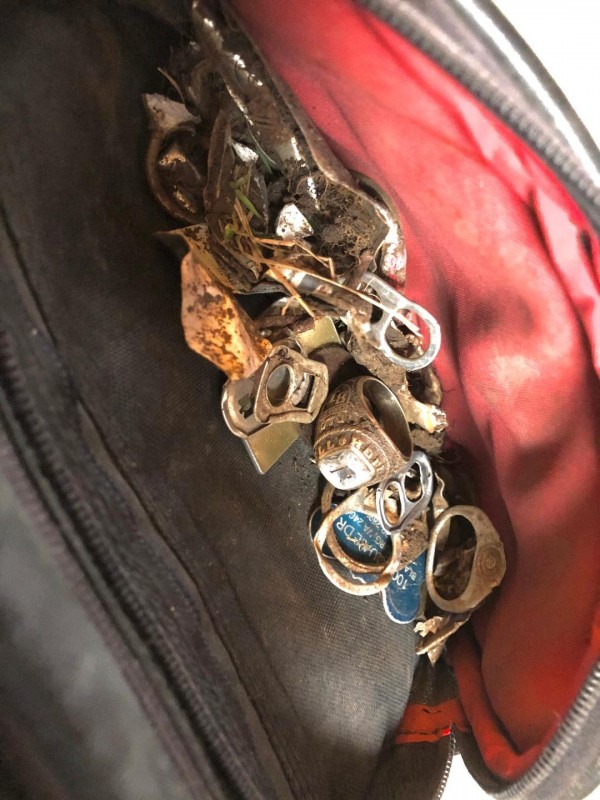
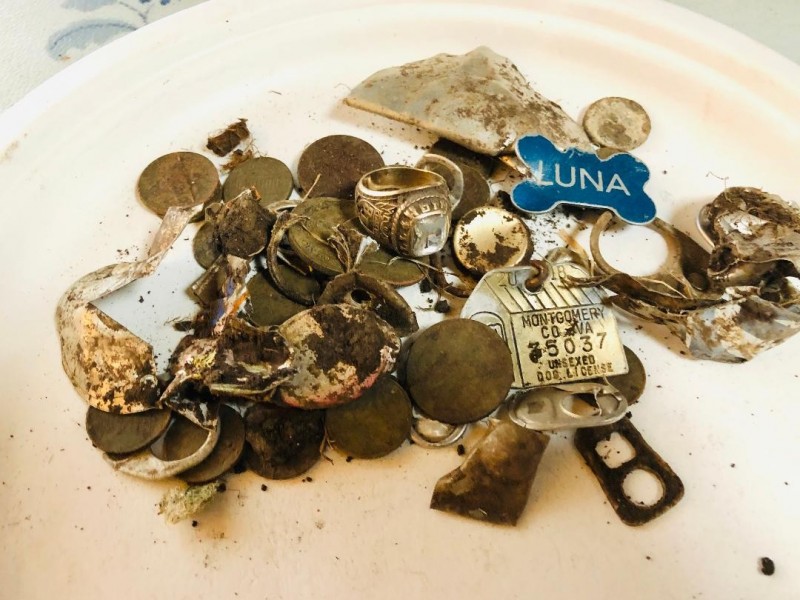
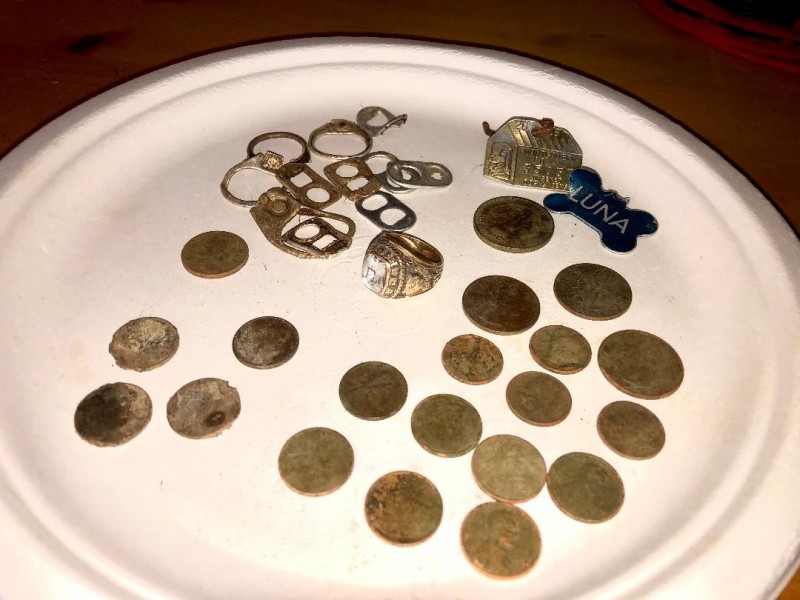

.thumb.jpg.d71314a45f3dc82bf75ac1b96e7e9201.jpg)

.thumb.jpg.98842dbfb384efdff17a552c0bed339b.jpg)
.thumb.jpg.d90d470f818bf0b0841dbd4e51a13077.jpg)
.thumb.jpg.c9857c9533dc699be3ae19c9f6e9353b.jpg)
.thumb.jpg.7d7fdef5b9de71d5b9783cbbb036d5fc.jpg)
.thumb.jpg.3c012ef90f8100644c33c2a44e94a3e0.jpg)
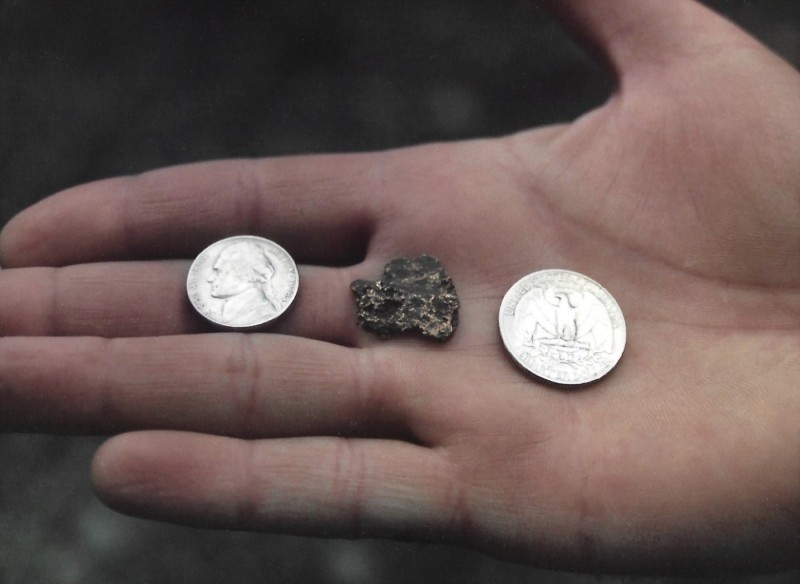
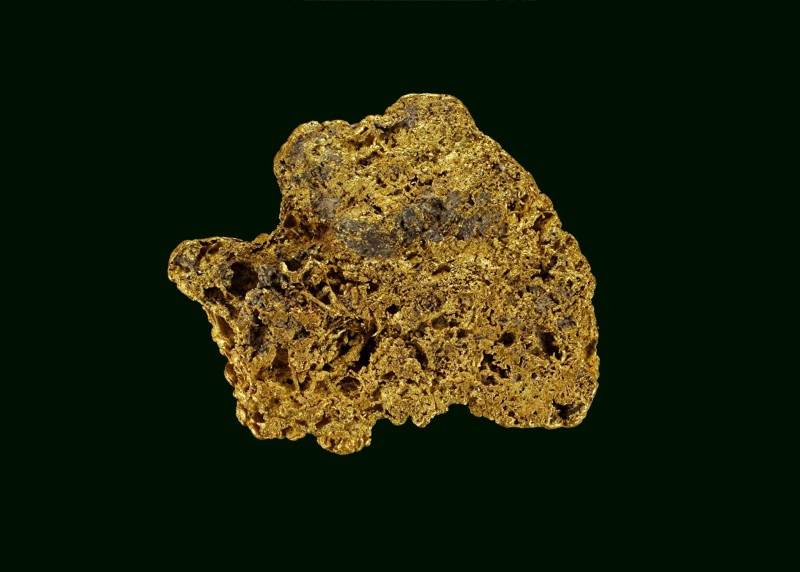
.thumb.jpg.e4db789e780d29206d9211cce2e36714.jpg)








